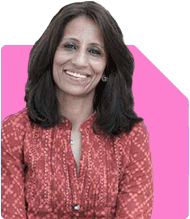Ramalingam Kalirajan |10894 Answers |Ask -Follow
Mutual Funds, Financial Planning Expert - Answered on Jul 12, 2025
He has an MBA in finance from the University of Madras and is a certified financial planner.
He is the director and chief financial planner at Holistic Investment, a Chennai-based firm that offers financial planning and wealth management advice.... more

Hi Sir, I am about to turn 39 years old. Basically from lower midle class and do not have parental property except simple home at rural area. I am working on IT as of now i have below savings. Stocks, mutual funds , fd, pf altogether approx ~ 60L with no other type any sort of savings Have a daughter who is 4 yrs age living in rental home . Right now facing lot of uncertainties with job due ongoing crisis + modern skills What are you guidance or suggestions for future financial freedom atleast to continue normal living. Thank you .
Let’s now look at a step-by-step, 360-degree financial plan. This is structured for your current life, responsibilities, risks, and goals.
? Build a Strong Emergency Fund Immediately
– This is your safety net during job loss or health issues.
– Keep 6 to 12 months of expenses as liquid cash.
– Don’t keep it in a savings account.
– Use liquid mutual funds with overnight redemption feature.
– This amount should be separate from your other investments.
– Use only when there is a real emergency.
? Evaluate Your Current Rs. 60 Lakh Portfolio
– Split your portfolio mentally into three buckets:
Short-term, medium-term, and long-term goals.
– You may be holding random investments now.
– That won’t help you during uncertainty.
– Map each rupee to a clear goal and timeline.
– Do not mix emergency funds, daughter’s goals, and retirement.
– Separate them properly, then track and invest accordingly.
? Avoid Index Funds and Direct Plans
– If any portion is in index funds, review them closely.
– Index funds lack downside protection.
– They fall as much as the market does.
– They also cannot outperform market returns.
– This is risky when job income is uncertain.
– Shift to actively managed mutual funds.
– These are managed by experts who adjust holdings.
– That gives better risk control and return potential.
– If any investments are in direct mutual funds, reconsider them.
– Direct plans don’t offer guidance or reviews.
– Wrong funds can silently eat your savings.
– Invest through regular plans via a Certified Financial Planner.
– You will get better fund selection, tracking, and peace of mind.
? Don’t Depend Too Much on Stocks
– Stocks are very risky without proper planning.
– If you hold individual stocks, check the exposure.
– Avoid more than 10-15% of your portfolio in direct stocks.
– Stock values can drop sharply and delay your goals.
– Mutual funds offer better diversification and monitoring.
– Gradually shift stocks into mutual funds via a plan.
? Recheck Your Life and Health Insurance
– Life insurance is vital if you have dependents.
– Get a term insurance plan of proper value.
– Ideally, cover 10 to 15 times your yearly income.
– Check if you already hold any ULIP or traditional LIC.
– If yes, check if they are insurance cum investment plans.
– Those plans offer poor returns.
– If suitable, surrender and shift to mutual funds instead.
– Also take a good health insurance plan for you and your family.
– Relying only on office health cover is not safe.
? Daughter’s Education and Marriage Goals
– Start separate SIPs for these two goals now.
– Keep education and marriage planning fully independent.
– Use a mix of large-cap and balanced mutual funds.
– Your daughter is only 4 years now.
– So you have 10 to 15 years for these goals.
– That gives enough time to grow money safely.
– Avoid FDs for long-term goals. Returns won’t beat inflation.
– Track each SIP and review yearly with a CFP.
? Focus on Retirement Planning Now
– Retirement needs should not be ignored.
– You don’t have any inherited property or assets.
– That makes it more important to create your own nest egg.
– PF alone won’t be enough.
– Use diversified equity mutual funds for retirement investing.
– Keep this investment separate from your other goals.
– Begin with a decent SIP, increase it every year.
– Use step-up SIP facility to increase savings slowly.
– Don’t withdraw from this portfolio for other reasons.
? Manage Risk of Job Uncertainty
– IT job market is volatile today.
– Upskill wherever possible to stay relevant.
– But financial planning must prepare for gaps in income.
– Keep 12 months of cash if job is highly uncertain.
– Review household spending and cut unwanted expenses.
– Avoid new loans, gadgets, or luxury items.
– Don’t commit to any large EMIs.
– Be cautious and financially conservative for now.
? Don’t Fall for High-Risk Investments
– Avoid cryptocurrency, trading apps, and stock tips.
– Also avoid peer-to-peer lending or chit funds.
– Many of these look tempting but can cause heavy loss.
– You can’t afford losses at this stage.
– Stick with mutual funds and secure instruments only.
? Plan Cash Flow, Not Just Assets
– Investment planning is not only about returns.
– It’s about cash flow for your goals.
– List when you will need money and how much.
– Allocate investments based on these timelines.
– Don’t lock long-term money in short-term plans.
– Also don’t invest short-term money in long-term risky funds.
? Review Portfolio Once a Year
– Don’t check returns daily or weekly.
– Set a yearly review with a Certified Financial Planner.
– Check if asset allocation is on track.
– Check if goals are moving as planned.
– Adjust SIP amounts if income or goal size changes.
? Don’t Depend on FD for Future
– FD may feel safe but gives low returns.
– FD returns may not beat long-term inflation.
– That reduces your purchasing power.
– Keep only short-term needs in FD.
– For all other goals, use mutual funds.
– Mutual funds are flexible, goal-based, and tax efficient.
? Tax Planning Should Support Goals
– Don’t invest only for tax saving under 80C.
– Instead, use ELSS funds that also grow wealth.
– Tax saving should not reduce liquidity or flexibility.
– Take guidance to plan both tax and wealth together.
? Stay Away from Real Estate for Now
– Buying house for investment is not wise now.
– It will block your money and limit flexibility.
– It will also bring EMIs and maintenance.
– Rental income is not reliable for early retirement.
– Focus only on liquid, well-managed investments.
? Protect Your Family With Proper Nominations
– Make sure all your investments have proper nominees.
– Write a Will if you have dependents.
– It avoids problems in case of any unfortunate events.
– Ensure your spouse or family knows about investments.
? Watch Mutual Fund Taxation Carefully
– Equity funds held over 1 year attract 12.5% tax on gains above Rs. 1.25 lakh.
– If sold within 1 year, 20% tax is applicable.
– Debt fund gains are taxed as per your tax slab.
– Plan redemptions carefully to reduce tax burden.
? Focus on One Goal at a Time
– Don’t try to do everything at once.
– Prioritise emergency fund, daughter’s education, then retirement.
– Avoid scattered investing with no link to goal.
– Be focused and consistent.
? Emotional Discipline is the Key
– Don’t panic during market crashes.
– Don’t stop SIP when markets fall.
– Wealth is built by staying invested.
– Continue SIPs even during income pressure.
– That builds your habit and long-term success.
? Setup SIPs for Simplicity
– Manual investing can get skipped or delayed.
– Setup SIP auto-debits through a trusted advisor.
– That ensures discipline and peace of mind.
? Track Your Progress, Not Just Returns
– Many investors chase high returns and lose track.
– Your focus should be on goal completion.
– Use goal-based dashboards for tracking.
– Review with a CFP yearly for alignment.
? Finally
– You are already doing better than you think.
– You have Rs. 60 lakh saved without property support.
– You are supporting your daughter and still saving.
– Now you need direction and structure.
– Start with proper planning of each rupee.
– Shift from random savings to goal-specific SIPs.
– Avoid index funds and direct mutual funds.
– Use regular mutual funds through a Certified Financial Planner.
– Strengthen your emergency fund and protect your income.
– Reassess risks, manage portfolio, and continue upskilling.
– A calm and steady approach will secure your family’s future.
– You still have 15-20 active years to build strong wealth.
– Start acting today with more clarity and confidence.
Best Regards,
K. Ramalingam, MBA, CFP,
Chief Financial Planner,
www.holisticinvestment.in
https://www.youtube.com/@HolisticInvestment
I'm truly glad the suggestions were helpful to you.
You're already on the right track by seeking clarity and planning ahead.
Stay consistent, review your investments regularly, and make goal-based decisions.
And always feel free to consult a Certified Financial Planner for customised guidance.
Wishing you and your family continued financial success and peace of mind.
Best Regards,
K. Ramalingam, MBA, CFP,
Chief Financial Planner,
www.holisticinvestment.in
https://www.youtube.com/@HolisticInvestment
You may like to see similar questions and answers below
Ramalingam Kalirajan |10894 Answers |Ask -Follow
Mutual Funds, Financial Planning Expert - Answered on Jul 19, 2024
Ramalingam Kalirajan |10894 Answers |Ask -Follow
Mutual Funds, Financial Planning Expert - Answered on Nov 18, 2024
Ramalingam Kalirajan |10894 Answers |Ask -Follow
Mutual Funds, Financial Planning Expert - Answered on Jun 26, 2025
Ramalingam Kalirajan |10894 Answers |Ask -Follow
Mutual Funds, Financial Planning Expert - Answered on Sep 08, 2025
Ramalingam Kalirajan |10894 Answers |Ask -Follow
Mutual Funds, Financial Planning Expert - Answered on Sep 11, 2025
Radheshyam Zanwar |6747 Answers |Ask -Follow
MHT-CET, IIT-JEE, NEET-UG Expert - Answered on Dec 16, 2025
Shalini Singh |181 Answers |Ask -Follow
Dating Coach - Answered on Dec 16, 2025
Patrick Dsouza |1429 Answers |Ask -Follow
CAT, XAT, CMAT, CET Expert - Answered on Dec 16, 2025
Nayagam P P |10858 Answers |Ask -Follow
Career Counsellor - Answered on Dec 16, 2025
Nayagam P P |10858 Answers |Ask -Follow
Career Counsellor - Answered on Dec 16, 2025
Samraat Jadhav |2510 Answers |Ask -Follow
Stock Market Expert - Answered on Dec 16, 2025
Samraat Jadhav |2510 Answers |Ask -Follow
Stock Market Expert - Answered on Dec 16, 2025
Nayagam P P |10858 Answers |Ask -Follow
Career Counsellor - Answered on Dec 16, 2025
Nayagam P P |10858 Answers |Ask -Follow
Career Counsellor - Answered on Dec 16, 2025
Ramalingam Kalirajan |10894 Answers |Ask -Follow
Mutual Funds, Financial Planning Expert - Answered on Dec 16, 2025

























